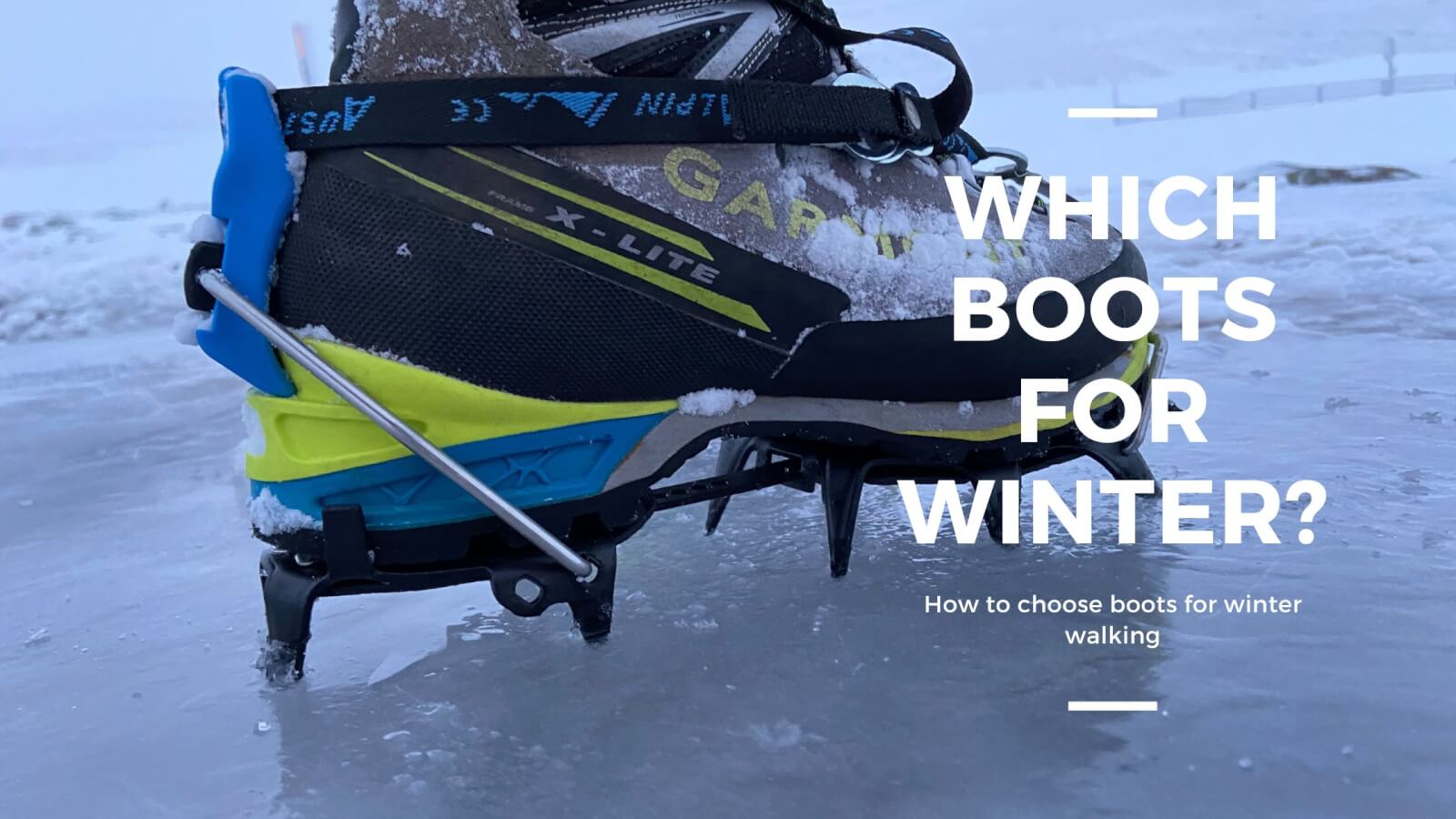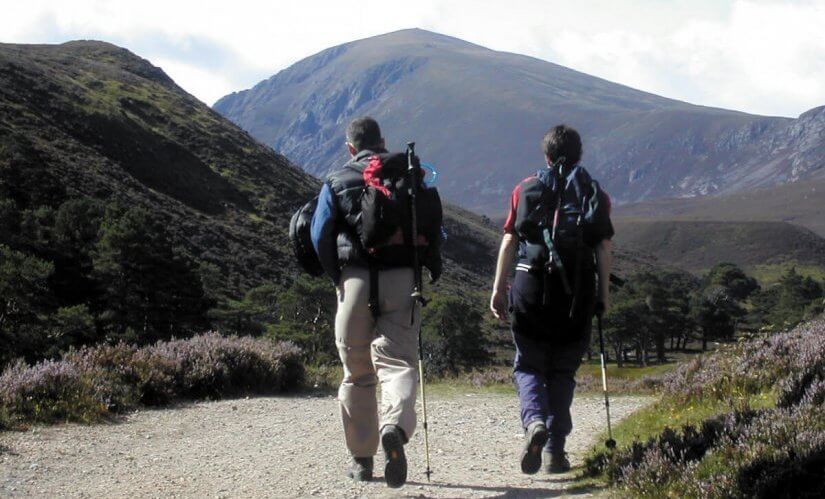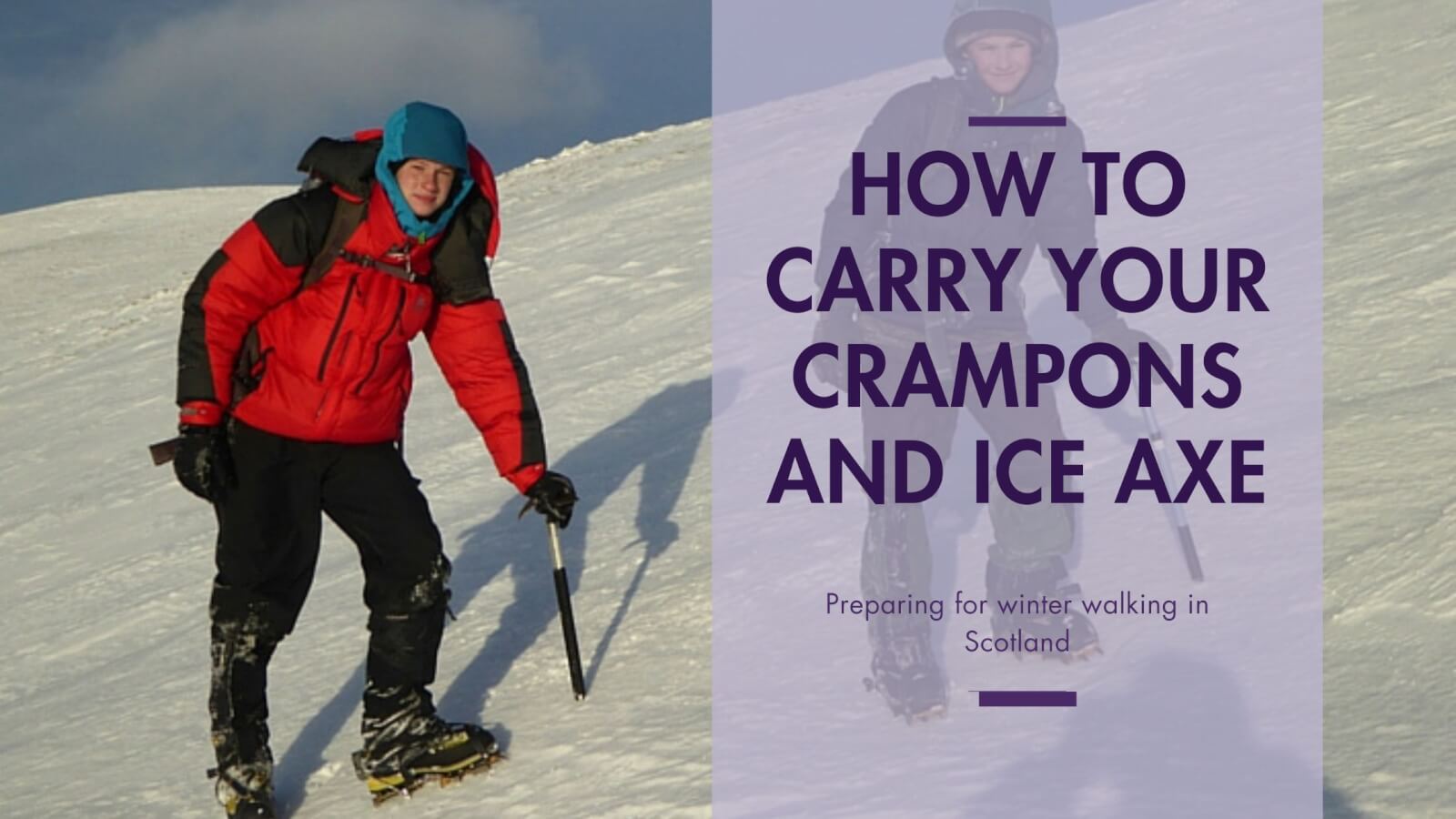How to Choose Boots for Winter Walking
Crampon compatibility is important, but it’s far from the only factor to consider when choosing a suitable mountain boot for Scotland’s winter hills. With 25 winter seasons of guiding and Winter Skills instruction under his belt, Andy Bateman of Scot Mountain Holidays shares what to look for in a reliable winter mountain boot.
Scotland’s winter mountains are as diverse and changeable as the weather that shapes them. Snow conditions can vary dramatically in both type and depth—far more so than any lingering summer snow. Add to that the range of situations where you may encounter snow and ice, and it becomes clear: limiting yourself with the wrong boots could hold you back before you’ve even begun your ascent. Choosing the correct winter boots is essential.
Why B2 or B3 Boots Are the Right Choice
1. Sole Rigidity
Winter days in Scotland are short, and efficiency is key. Moving quickly and safely saves both energy and time. That’s why sole rigidity is vital.
The rigidity of a winter boot doesn’t come from the sole itself but from the mid-sole. It’s crucial that the boot is stiff both lengthways and across its width. Most modern boots with rigidity in one direction will have it in the other, too.
A stiff sole concentrates your weight effectively, whether you’re cutting into snow and ice or relying on the boot’s grip. Here’s why this matters:
a. Better Grip
B2 and B3 boots provide superior grip on snow and ice compared to B1 boots. This can mean less reliance on crampons for minor snow cover. Walking in crampons over thinly snow-covered rocks can be awkward and inefficient; in such conditions, a stiff boot often performs best.
b. Kick Steps Effectively
Sometimes it’s faster and more practical to kick a few steps into firm snow rather than stop to put on crampons. Flexible B1 boots often don’t hold up here. When you try to kick “pigeon hole” steps, for example, the boot’s toe can bend upward and bounce off the surface instead of cutting in. This isn’t just inefficient—it’s uncomfortable.
c. Safe Front Pointing
In steep terrain, the ability to “front point” safely is essential. B1 boots are often too flexible: the toe bends upward, the heel drops, and the front crampon points can shear out of the snow or ice, increasing the risk of falling backward out of the step.
d. Less Stress on Crampons
Crampons are tough pieces of kit, but they’re not indestructible. A flexible boot places unnecessary stress on the crampon, which can weaken it over time and eventually lead to failure. Using a rigid B2 or B3 boot supports your crampons properly, reduces wear, and ensures greater comfort for your feet.
2. Robust Upper
A stiff, well-structured upper is equally important. In softer, more flexible boots, tightening crampon straps can squeeze and restrict your feet. This can reduce blood circulation, leading to cold feet—or worse, frostbite. B2 and B3 boots are built to prevent this, keeping your feet secure but comfortable.
3. Better Insulation
Winter boots are designed with insulation in mind, which is critical for keeping feet warm in sub-zero temperatures. This insulation also tends to add padding, increasing overall comfort during long winter hikes. Cold feet are uncomfortable at best, and at worst, they can lead to injury or frost damage.
Conclusion: Boots Are Tools—Choose Wisely
Your boots are as much a tool as your axe or crampons when it comes to winter walking. For the Scottish winter mountains, a B3 boot is not overkill—it’s an investment in safety, efficiency, and comfort. While a B1 boot might be adequate for summer treks involving glacier crossings in the Alps or Himalayas, it simply doesn’t offer the necessary performance for Scotland’s unpredictable winter conditions.
Before heading to your local outdoor gear shop, check which staff members are trained in proper boot fitting and when they’ll be available. Taking the time to find the right boots will make all the difference in your winter walking adventures.
If you’re preparing for your first winter trip—or just looking to upgrade your kit—remember: the right boots will let you tackle Scottish winter mountains with confidence. Also you don’t need to commit the first time you are trying out winter walking – you can hire boots to find out if that’s your thing or not.
Ready to hit the hills? Let Scot Mountain Holidays show you the ropes with expert-led Winter Skills courses.















